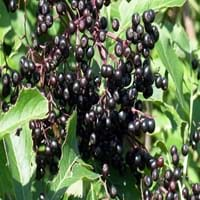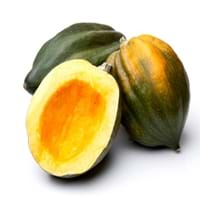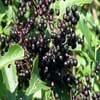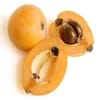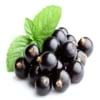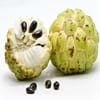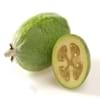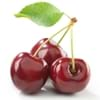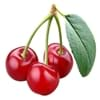cơm cháy và Acorn bí
Lợi ích
lợi ích sức khỏe
ngăn ngừa ung thư, chăm sóc tim
đặc tính chống viêm, điều trị bệnh viêm khớp, Điều hòa đường huyết
lợi ích chung
đặc tính chống oxy hóa, đặc tính chống viêm, Tăng hệ miễn dịch, Điều khiển lượng đường trong máu, chữa sốt, trợ giúp tiêu hóa, Chăm sóc mắt, Các trận đánh chống lại nhiễm trùng, Điều trị cảm cúm, Giúp giảm cân, Duy trì mức cholesterol khỏe mạnh
Tăng hệ miễn dịch, Điều khiển lượng đường trong máu, trợ giúp tiêu hóa
lợi ích Skin
lợi ích chống lão hóa, trẻ hóa da
Nuôi dưỡng làn da, Bảo vệ da khỏi stress oxy hóa
lợi ích tóc
Đẩy mạnh hơn và tóc khỏe mạnh
Ngăn ngừa rụng tóc, Đẩy mạnh hơn và tóc khỏe mạnh, Điều chỉnh tăng trưởng tóc
dị ứng
Các triệu chứng dị ứng
đau bụng, hen suyễn, NA, Hắt xì, Viêm họng
hen suyễn, nổi mẩn đỏ, Sưng miệng, lưỡi hoặc môi
Tác dụng phụ
Bệnh tiêu chảy, buồn nôn, nôn
Bệnh tiêu chảy, nôn
recommeded cho
Phụ nữ mang thai
Vâng
Vâng
Phụ nữ cho con bú
Không có sẵn
Vâng
Thời gian tốt nhất để ăn
Như một món ăn trong buổi chiều muộn, Không dùng vào ban đêm và trước khi đi ngủ, Ăn những cái mới, tránh pha trộn với bất kỳ loại thực phẩm khác, không ăn sau bữa ăn., thời gian buổi sáng (trước giờ ăn trưa)
Cùng với bữa ăn, Như một món ăn trong buổi chiều muộn, Không ăn sau bữa ăn, Ăn những cái mới, tránh pha trộn với bất kỳ loại thực phẩm khác, không ăn sau bữa ăn.
Dinh dưỡng
phục vụ Kích thước
100g
100g
carbs
18,40 g
16
10,40 g
99+
Chất xơ
7,00 g
4
1,50 g
31
Đường
Không có sẵn
0,00 g
99+
Chất đạm
0,66 g
99+
0,80 g
37
Protein Tỷ số carb
0,04
24
0,08
19
Vitamin
Vitamin A (Retinol)
30,00 mcg
17
245,10 mcg
2
Vitamin B1 (Thiamin)
0,07 mg
11
0,10 mg
7
Vitamin B2 (Riboflavin)
0,06 mg
16
0,00 mg
99+
Vitamin B3 (Niacin)
0,50 mg
30
0,50 mg
30
Vitamin B5 (Pantothenic Acid)
0,14 mg
99+
0,30 mg
12
Vitamin B6 (pyridoxin)
0,23 mg
6
0,10 mg
15
Vitamin B9 (axit Folic)
6,00 mcg
29
11,00 mcg
24
Vitamin C (ascorbic acid)
36,00 mg
23
6,50 mg
99+
Mập
0,50 g
18
0,10 g
99+
khoáng sản
kali
280,00 mg
21
263,00 mg
25
Bàn là
1,60 mg
8
0,60 mg
21
sodium
6,00 mg
14
3,00 mg
17
canxi
38,00 mg
9
26,00 mg
17
magnesium
5,00 mg
30
26,00 mg
8
kẽm
0,11 mg
22
0,10 mg
23
Photpho
39,00 mg
9
27,00 mg
19
mangan
Không có sẵn
0,10 mg
31
Đồng
0,06 mg
36
0,10 mg
22
Selenium
0,60 mcg
10
0,40 mcg
13
Axit béo
Omega 3
85,00 mg
9
22,00 mg
24
6s Omega
162,00 mg
12
13,00 mg
99+
sterol
Hàm lượng nước
79,80 g
99+
89,70 g
13
Tro
0,60 g
20
0,80 g
13
Năng lượng
phục vụ Kích thước
100g
100g
Calo trong trái cây tươi với Peel
73,00 kcal
11
40,00 kcal
31
Calo trong trái cây tươi mà không Peel
Không có sẵn
Không có sẵn
Calo trong đông lạnh mẫu
Không có sẵn
39,00 kcal
23
Năng lượng trong mẫu khô
340,00 kcal
12
56,00 kcal
40
Năng lượng trong Mẫu đóng hộp
Không có sẵn
40,00 kcal
22
Calo trong thực phẩm
Calo trong nước trái cây
200,00 kcal
4
47,00 kcal
31
Calo trong Jam
280,00 kcal
12
200,00 kcal
26
Calo trong Pie
310,00 kcal
16
200,00 kcal
99+
Đặc điểm
Kiểu
quả mọng
quả mọng
Mùa
mùa thu
Mùa đông
giống
Adams, Black Beauty, Black Lace, Johns, Nova, Variegated và York
Bush Bảng Queen, gia truyền Bảng Queen, Liên hoan Hybrid, sớm Acorn Hybrid, Bảng Ace, Ebony và Kem của cây trồng
không hạt giống
Không
Không
Màu
Đen, đỏ
Màu xanh lá cây đậm, Màu xanh lá cây, màu vàng, Orange xanh
bên trong màu
màu đỏ sậm
Màu vàng
hình dáng
Tròn
Tròn
Kết cấu
rôm rả
có sợi
Nếm thử
rôm rả, Ngọt
hơi ngọt
Gốc
Châu Âu
Trung Mỹ, Bắc Mỹ, không xác định
mọc trên
Cây
Vines
Canh tác
Loại đất
cát, Thoát nước tốt
Thoát nước tốt
pH đất
5.5-6.5
5.8-6.8
Điều kiện khí hậu
Ấm áp cho khí hậu nóng
Lạnh, Nắng
Sự kiện
Sự thật về
- Theo một niềm tin mê tín dị đoan, "cây đàn anh" được cho là để tránh ảnh hưởng xấu và cung cấp bảo vệ từ phù thủy.
- Chi nhánh từ cây của nó cũng được sử dụng để làm cho fujara, koncovka và sáo Slovakia khác.
- Nó được đặt tên là Acorn Squash cho tương đồng của nó với một acorn gân lớn.
- Người ta nói rằng bí đã được trồng ở Mexico chừng 10.000 năm trước đây.
- Đây là thực phẩm đầu tiên được trồng bởi người Mỹ da đỏ bản địa.
Trong Đồ uống có cồn
Rượu nho
Vâng
Không
bia
Vâng
Vâng
Spirits
Vâng
Vâng
cocktails
Vâng
Vâng
Sản lượng
Top sản xuất
Chủng Quốc Hoa Kỳ
Trung Quốc
Các nước khác
Colombia, Ấn Độ, Mexico
Ai Cập, Ấn Độ, Iran, Ý, Mexico, Nga, gà tây, Ukraina, Chủng Quốc Hoa Kỳ
Lên trên nhập khẩu
Không có sẵn
Costa Rica
Lên trên xuất khẩu
Không có sẵn
Chủng Quốc Hoa Kỳ
Tên khoa học
Tên thực vật
Sambucus nigra
Cucurbita pepo
Từ đồng nghĩa
Không có sẵn
Winter Squash
Phân loại
Miền
Eukarya
Eukarya
Vương quốc
Plantae
Plantae
Subkingdom
Tracheobionta
Tracheobionta
phân công
Magnoliophyta
Magnoliophyta
Lớp học
Magnoliopsida
Magnoliopsida
Thứ hạng
Asteridae
Dillenhidae
Gọi món
bộ tục đoạn
bộ bầu bí
gia đình
họ ngũ phúc hoa
Cucurbitaceae
giống
Sambucus
Cucurbita
Loài
S. nigra
Pepo
generic Nhóm
Moschatel
Không có sẵn
|
||
|
||
|
